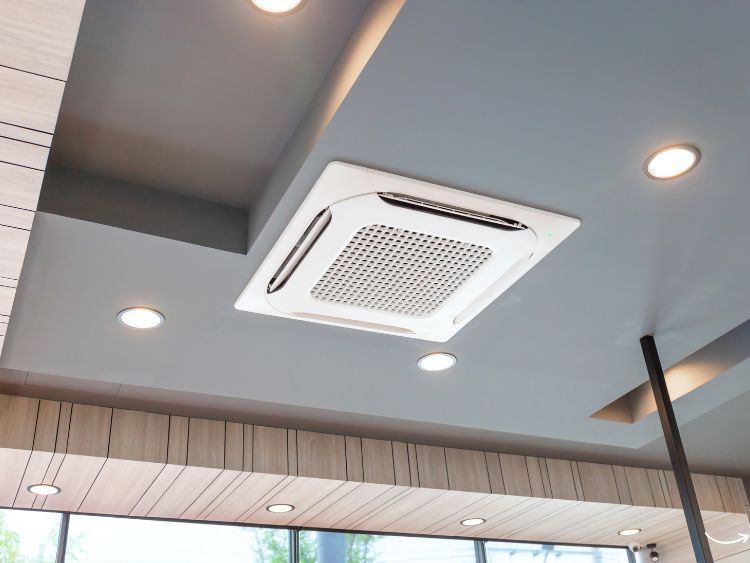Local exhaust ventilation (LEV) is a crucial aspect of industrial hygiene and workplace safety. It involves removing airborne contaminants at their source before they can spread throughout the workplace. LEV systems are vital in industries where workers are exposed to hazardous substances like dust, fumes, vapors, and gases. In this article, we’ll dive deep into the world of local exhaust ventilation, exploring its components, benefits, and best practices.
What is Local Exhaust Ventilation?
Local exhaust ventilation (LEV) is a type of engineering control system designed to reduce worker exposure to airborne contaminants. By capturing and removing these pollutants directly at their source, LEV systems prevent them from dispersing into the workplace atmosphere. This method is highly effective in maintaining air quality and protecting workers’ health.
The Components of LEV Systems
LEV systems consist of several key components, each playing a vital role in ensuring effective operation. Here’s a closer look at these components:
1. Hood
The hood is the part of the LEV system placed close to the contaminant source. It captures the pollutants as they are generated. Hoods come in various shapes and sizes, depending on the specific application and the type of contaminant being controlled.
2. Ductwork
Ductwork transports the captured contaminants from the hood to the air cleaning device. The design and layout of the ductwork are critical to minimizing pressure losses and ensuring efficient transport of pollutants.
3. Air Cleaner
The air cleaner, also known as a filter or scrubber, removes contaminants from the airstream before it is exhausted into the atmosphere or recirculated into the workplace. There are various types of air cleaners, including mechanical filters, electrostatic precipitators, and chemical scrubbers, each suited for different types of contaminants.
4. Fan
The fan provides the necessary airflow to move air through the LEV system. It creates the pressure difference needed to capture and transport contaminants from the hood through the ductwork to the air cleaner and, finally, to the exhaust stack.
5. Exhaust Stack
The exhaust stack releases the cleaned air into the atmosphere or recirculates it back into the workplace. It must be positioned to prevent re-entry of contaminants into the work environment.
Benefits of Local Exhaust Ventilation
Implementing an LEV system offers numerous benefits, enhancing workplace safety and efficiency. Here are some of the key advantages:
1. Improved Air Quality
By capturing contaminants at their source, LEV systems significantly improve the overall air quality in the workplace. This leads to a healthier environment for workers and reduces the risk of respiratory problems and other health issues.
2. Regulatory Compliance
LEV systems help businesses comply with occupational health and safety regulations, such as those set by OSHA and other regulatory bodies. Compliance not only ensures worker safety but also avoids costly fines and legal issues.
3. Increased Productivity
A cleaner work environment leads to increased productivity. Workers are less likely to experience health issues related to poor air quality, resulting in fewer sick days and higher efficiency.
4. Cost Savings
Investing in an LEV system can lead to significant cost savings in the long run. By preventing exposure to hazardous substances, businesses can reduce medical costs, compensation claims, and downtime due to worker illness.
Best Practices for LEV Systems
To ensure the effectiveness of an LEV system, it is essential to follow best practices in design, installation, and maintenance. Here are some tips to keep in mind:
1. Proper Hood Placement
The hood should be positioned as close to the contaminant source as possible to maximize capture efficiency. The design of the hood should match the specific application and type of contaminant.
2. Regular Maintenance
Regular maintenance of the LEV system is crucial to ensure its continued effectiveness. This includes inspecting and cleaning hoods, ductwork, fans, and air cleaners. Scheduled maintenance helps identify and address issues before they become significant problems.
3. Monitoring and Testing
Regular monitoring and testing of the LEV system are essential to verify its performance. This includes measuring airflow rates, checking for leaks, and ensuring that all components function correctly.
4. Worker Training
Training workers on the proper use and maintenance of the LEV system is vital. They should understand the importance of the system, how it works, and their role in keeping it operational.
Common Applications of LEV Systems
LEV systems are used in a variety of industries to control different types of contaminants. Here are some common applications:
1. Welding and Metalworking
Welding and metalworking processes generate hazardous fumes and particulates that can be effectively controlled with LEV systems. These systems capture the fumes directly at the welding point, preventing them from spreading into the work area.
2. Chemical Manufacturing
In chemical manufacturing, LEV systems are used to capture vapors, gases, and dust generated during various processes. This is crucial for protecting workers from exposure to toxic substances.
3. Woodworking
Woodworking operations produce large amounts of dust that can pose respiratory hazards. LEV systems capture the dust at the source, maintaining a cleaner and safer work environment.
4. Pharmaceutical Industry
The pharmaceutical industry often handles potent compounds that require stringent control measures. LEV systems help contain these substances, ensuring worker safety and product integrity.
FAQs about Local Exhaust Ventilation
Q1: How often should LEV systems be inspected?
A: LEV systems should be inspected regularly, with a comprehensive examination at least once a year. Regular inspections help identify potential issues and ensure the system operates effectively.
Q2: Can LEV systems be used in conjunction with other ventilation methods?
A: Yes, LEV systems can be used alongside general ventilation systems to enhance overall air quality. While LEV targets specific sources of contamination, general ventilation helps dilute residual pollutants.
Q3: What types of contaminants can LEV systems control?
A: LEV systems can control various contaminants, including dust, fumes, vapors, gases, and mists. The type of air cleaner used will depend on the specific contaminants present.
Q4: How do I know if my LEV system is working correctly?
A: Regular monitoring and testing, such as airflow measurements and contaminant sampling, can verify the effectiveness of your LEV system. Additionally, keeping up with maintenance and worker training helps ensure optimal performance.
Summary
Local exhaust ventilation is a powerful tool for maintaining a safe and healthy workplace. By capturing contaminants at their source, LEV systems prevent the spread of hazardous substances, protecting workers and enhancing productivity. Implementing an effective LEV system involves proper design, regular maintenance, and ongoing monitoring. By following best practices, businesses can reap the benefits of improved air quality, regulatory compliance, and cost savings. So, invest in a robust LEV system today and ensure a safer tomorrow for your workforce.
By following these guidelines, you can ensure your article on local exhaust ventilation is informative, engaging, and optimized for search engines.



